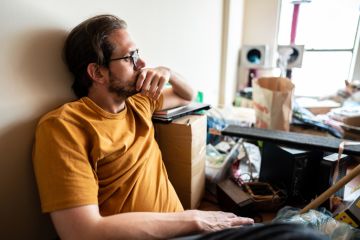Swedish death cleaning: How to declutter your home and life

There has been a trend in recent years, both in literature and in life, for Scandinavian concepts that are encapsulated in a single word. Hygge, for example – which is Danish for cosiness, contentment or well-being – dominated the publishing industry in 2016.
Now, the new buzzword on the block is “dostadning” – a hybrid of the Swedish words “death” and “cleaning”. How much these fad words are actually a part of Scandinavian culture is debatable, but dostadning is the new phenomenon outlined in Margareta Magnusson’s The Gentle Art of Swedish Death Cleaning. In Europe, the book has already occupied a good deal of reviewing space and according to Time magazine, dostadning will be the hot new trend stateside in 2018.
Magnusson’s book chimes with the current anxiety about clutter in the 21st century. Dostadning advocates the proactive and mindful clearing out of possessions before death. The idea is that it saves relatives the onerous task of making decisions about what to keep and what to throw or give away. The book reflects the simple fact that we are all living longer lives. This results, of course, in more stuff.
Digital death
But it also means we have more time to get rid of things. We can start planning for our death by slimming down what we leave behind – shedding unnecessary objects in favour of what we actually need. It is the antithesis, perhaps, of the ancient Egyptian tradition of being buried with things that might accompany us into the afterlife.
Magnusson’s top tips for dostadning focus mostly on material possessions – though she suggests keeping a book of passwords for family so they can access online data more easily. But this is no straightforward task, given that more and more of our data – photos, letters, memories – as well as actual things – music and books – exist in digital rather than analogue form. And as more of our lives are logged and lodged virtually, chances are our relatives might not be able to access it.

Shutterstock
A documentary about this precise issue aired recently on BBC Radio 4. My Digital Legacy was part of the We Need to Talk about Death series and featured terminally ill patients with an extensive digital footprint who rely on the internet – especially on social media – to connect to the world around them. The programme also heard from bereaved relatives who experienced difficulties in accessing data, including Facebook profiles, of loved ones after their death.
The death manager
My recent short story How To Curate a Life, published by Storgy Books in the anthology Exit Earth, deals with precisely this issue. Set in the not too distant future, the parents of a young woman killed suddenly in an accident try to commission Jesse – a “digital death manager” – not to curate her life but to erase it: to gain access to her files then destroy them.
In this fictional world where everyone is required to dictate the terms of their digital estate, it is illegal for Jesse to tamper with the girl’s online content. And yet, the financial reward would mean freedom from his desk bound job forever.

Shutterstock
The story grew from an idea I found online about careers that will be ubiquitous in the future. Digital death management, it seems, is definitely set to become “A Thing”. And just as we now commission solicitors or will writers to oversee our material estate – there will come a time when people will also hire someone to clean up their digital footprint
In our already busy lives, does tending to our online existence give us one more thing to do? Perhaps so. But it’s about taking responsibility for our own stuff. If we don’t make the decisions about what to keep or discard – whether actual or online – then ultimately others will need to. And if we don’t leave clear directions about where to find our digital content, it makes things tougher for everyone.
![]() As Magnusson writes, death cleaning is “a permanent form of organisation that makes everyday life run smoothly”. What better legacy to leave behind than to ease the bereavement process for the ones we love?
As Magnusson writes, death cleaning is “a permanent form of organisation that makes everyday life run smoothly”. What better legacy to leave behind than to ease the bereavement process for the ones we love?
Rachel Connor, Senior Lecturer in Creative Writing, Leeds Beckett University
This article was originally published on The Conversation. Read the original article.
We recommend
We thought you might like
States
Capital Cities
Capital Cities - Rentals
Popular Areas
Allhomes
More







